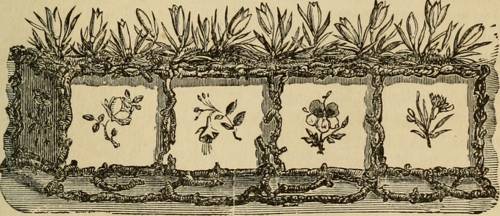
FAQ About Indoor Plant Phytohormone Management

What are phytohormones?
Phytohormones, also known as plant hormones, are natural substances produced within plants that regulate growth, development, and responses to environmental stimuli. They are essential for processes such as cell division, elongation, flowering, fruiting, and stress response.

Why is phytohormone management important for indoor plants?
Managing phytohormones in indoor plants is crucial for maintaining their health and enhancing growth. Since indoor environments often lack the natural stimuli found outdoors, proper phytohormone management can help plants adapt by regulating their growth patterns and stress responses effectively.

How do auxins affect indoor plant growth?
Auxins are a type of phytohormone that promote cell elongation, root growth, and differentiation. In indoor plants, they can be used to enhance root development, regulate stem growth, and improve overall vigor. Their management helps achieve desired plant shapes and sizes, especially in limited spaces.

Can phytohormones help indoor plants deal with stress?
Yes, phytohormones play a significant role in how indoor plants respond to stress factors such as low light, humidity fluctuations, and limited space. Hormones like abscisic acid and ethylene help plants manage stress by adjusting physiological processes to improve survival and adaptation.

How can cytokinins be used in managing indoor plant growth?
Cytokinins are phytohormones that promote cell division and shoot growth. They can be used to encourage branching and bushier growth in indoor plants. Proper cytokinin management can result in fuller, more aesthetically pleasing plants.

What role does gibberellin play in indoor plants?
Gibberellins are phytohormones that primarily promote stem elongation, seed germination, and flowering. In indoor plants, they can be applied to boost growth and induce flowering under specific conditions, helping to counteract the limited resources typically available indoors.

How can jasmonates influence indoor plant health?
Jasmonates are phytohormones involved in plant defense against pests and diseases, as well as in stress responses. By managing jasmonates, indoor gardeners can improve plant resilience against common indoor threats such as insect infestations and fungal infections.

What are the risks of improper phytohormone management in indoor plants?
Improper management of phytohormones can lead to imbalanced growth, such as excessive elongation or stunted growth, poor stress responses, and overall decreased vitality. It is important to monitor and adjust hormone levels carefully to ensure optimal plant health and appearance.

How does ethylene affect indoor plants, and how can it be managed?
Ethylene is a phytohormone that influences fruit ripening and leaf abscission. In indoor plants, excessive ethylene can lead to premature leaf drop and reduced flowering. Managing ethylene levels involves controlling environmental factors like temperature and gas exposure to minimize negative effects.

Can natural ways be used to manage phytohormones in indoor plants?
Yes, natural methods such as adjusting light, humidity, and watering regimes can influence phytohormone levels in indoor plants. Additionally, using organic growth boosters and avoiding chemicals that disrupt hormone balance can help maintain healthy phytohormone activity.

What are some signs of hormonal imbalance in indoor plants?
Signs of hormonal imbalance in indoor plants include irregular growth patterns, such as excessive stretching (etiolation), lack of branching, poor root development, and abnormal leaf drop. Monitoring plants regularly can help detect these issues early for corrective action.

Are synthetic phytohormones safe to use in indoor plants?
Synthetic phytohormones can be safe if used correctly and in appropriate concentrations. However, misuse can lead to plant damage or negative environmental effects. It's important to follow manufacturer guidelines and conduct small-scale trials before widespread application.

How can abscisic acid be beneficial in indoor plant management?
Abscisic acid plays a critical role in plant responses to stress and helps maintain physiological functions during drought or low water availability. In indoor environments, managing abscisic acid can help plants conserve water and maintain health during stress conditions.

What are brassinosteroids and how do they affect indoor plant growth?
Brassinosteroids are a class of phytohormones that promote cell expansion and enhance stress tolerance. They can be applied to improve the growth and environmental stress resilience of indoor plants, contributing to robust plant structures and improved overall health.

Is there a way to naturally boost auxin levels in indoor plants?
Natural methods to boost auxin levels include ensuring adequate light exposure, using rooting hormones derived from natural sources like willow, and maintaining optimal soil conditions. Organic materials like compost can also enhance root development by improving soil health.

How do phytohormones interact with each other in indoor plants?
Phytohormones often work together in complex networks, influencing each other's levels and effects. For example, auxins and cytokinins may interact to regulate root and shoot growth balance. Understanding these interactions is key to effective hormone management in indoor plants.

Can all indoor plants benefit from the same phytohormone management strategies?
No, different species and varieties of indoor plants may require specific phytohormone management strategies. Factors such as plant size, growth rate, and environmental conditions all play a role in determining the best approach for each individual plant.

How do environmental factors affect phytohormone levels in indoor plants?
Environmental conditions such as light intensity, temperature, humidity, and soil composition can significantly affect phytohormone levels in indoor plants. Adjusting these factors can help manipulate hormone activity to support healthy growth and stress responses.

What tools or techniques can be used to measure phytohormone levels in indoor plants?
Measuring phytohormone levels typically involves laboratory techniques such as chromatography or enzyme-linked immunosorbent assays (ELISA). These methods are usually conducted by professionals, but gardeners can rely on visual assessments to infer hormone imbalances based on plant appearance.

How should a beginner start with phytohormone management for indoor plants?
Beginners can start by learning about the basic roles of different phytohormones and observing their indoor plants for any signs of hormonal imbalance. Experimenting with light, watering, and plant care routines can help determine what works best. Consulting expert resources or gardening communities can provide additional guidance.
